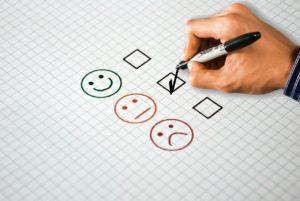Adaptive learning is also the type of learning that tailors training to an employee’s level of understanding, skills, and interests. While there are numerous reasons why delivering it in an organization is essential, let’s have a quick look at a few of them.
Why is implementing adaptive learning essential?
One of the reasons why implementing adaptive learning is essential in your organization is because it has a higher potential to revolutionize corporate training.
Also, it’s the ability to address the unique needs of learners makes it an effective tool, with little or zero room for errors. And being that effective, organizations stand a high chance of meeting their business goals when learners get trained through it.
However, with these reasons and many more, it’s so unfortunate that some organizations are still utilizing a one-size-fits-all approach to deliver training.
What can we say is the reason for that? Well, it is a frontline topic in learning and development, meaning that there’ll always be room for misconceptions about implementing it.
Unfortunately, these misconceptions have discouraged so many organizations from using it. In this article, we’ll be looking at the common superstitions that exist in adaptive learning and the reality of each of them.
Common superstitions about adaptive learning
# Adaptive learning and personalized learning are the same
One of the common misconceptions that people have is that it is the same with personalized learning. However, this is so untrue as there are a lot of differences between the two learning approaches.
Reality
Personalized learning is a type of learning that requires learning professionals to have prior knowledge of their employees. That means instructors must first carry out pre-assessment on their learners to know their baseline knowledge level.
However, in the case of adaptive learning, the case is different. Adaptive learning is an effective learning approach that utilizes a data-driven algorithm to develop content that matches individual employee’s learning needs.
What it does is that it helps by evaluating learners’ level of knowledge and interaction with specific content. It then remodifies the content according to the data acquired through evaluation.
# It requires specialized technology
Another misconception is that it is expensive to implement as it requires specialized technology.
Reality
Although having a special technology will give you an edge and make it easy to deliver, you can still do without it. That’s because most authoring tools support it, and opting for one of them will make it easy for you to implement.
But how can authoring tools fill in the space of special technologies for you to implement adaptive learning? Most advanced authoring tools have the potential of enabling you to supply links to optional materials.
Apart from that, they can also offer a means to assign learning by roles to individual employees. All you need is to research and opt for the right and advanced authoring tools to implement your adaptive learning.
# Adaptive learning is only about assessment
Many people also have the misconception that it is just about assessing learners. Without a doubt, it’ll be difficult to see two people with the same learning needs from day one.
Because of that, it’s only essential that instructors should carry out pre-assessment to know an individual employee’s skill gap.
Reality
Let’s face it! It’s not true that it is just about assessment. Pre-assessments only depend on a few data at a single time, and while it’s effective, it only helps to limit the delivery of one-size-fits-all learning. That’s not adaptive learning!
In this case, there’s always a need for ongoing acquisition of data, including employee performance, behavior, and practical assessments. And by continuously collecting these data through adaptive systems, new content is created to meet their learning needs.
# Too hard to review adaptive content
Some people even say that reviewing the content can be a difficult thing to do. And that it takes time to go through all of the learning paths in the content.
Reality
The reality of this myth is that most stakeholders with proper knowledge of adaptive learning should be able to review all their content. While some tools can help to simplify tasks for you, some templates also allow you to comment and review content in prototypes.
So, by utilizing them, it becomes straightforward and easy for you to perform any review task.
Conclusion
There are numerous benefits attached to implementing adaptive learning in your organization. However, to get the best out of it, you need to look away from the misconceptions about it.







